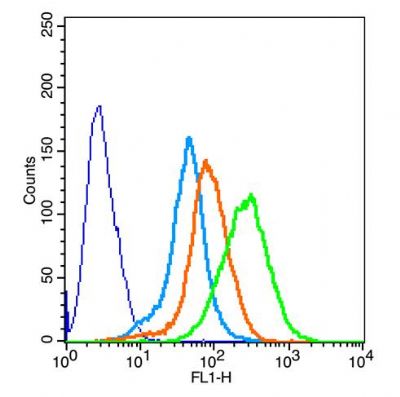Tissue/cell: mouse lymphoma tissue; 4% Paraformaldehyde-fixed and paraffin-embedded;
Antigen retrieval: citrate buffer ( 0.01M, pH 6.0 ), Boiling bathing for 15min; Block endogenous peroxidase by 3% Hydrogen peroxide for 30min; Blocking buffer (normal goat serum,SLC0005) at 37℃ for 20 min;
Incubation: Anti-MHC class I Polyclonal Antibody, Unconjugated(SL2387R) 1:200, overnight at 4°C, followed by conjugation to the secondary antibody(SP-0023) and DAB(SLC0010) staining
The blue histogram is unstained cells(RSC96 cells).
The Wathet Blue histogram is cells stained with secondary antibody alone.
The Orange histogram is cells stained with rabbit IgG isotype control antibody plus secondary antibody.
The green histogram is cells stained with Rabbit Anti-MHC class I/HLA A antibody (SL2387R)plus secondary antibody.
Concebtration:5μg/10^6 cells .

